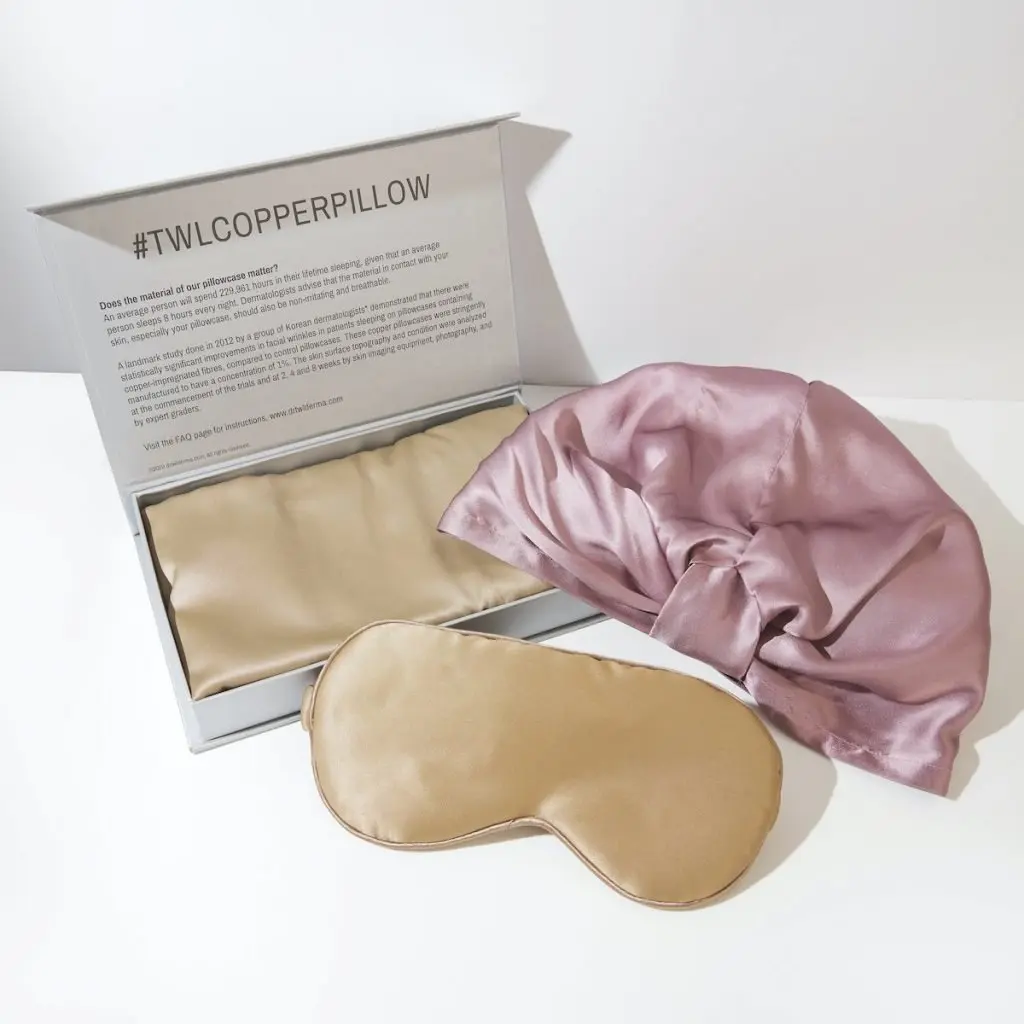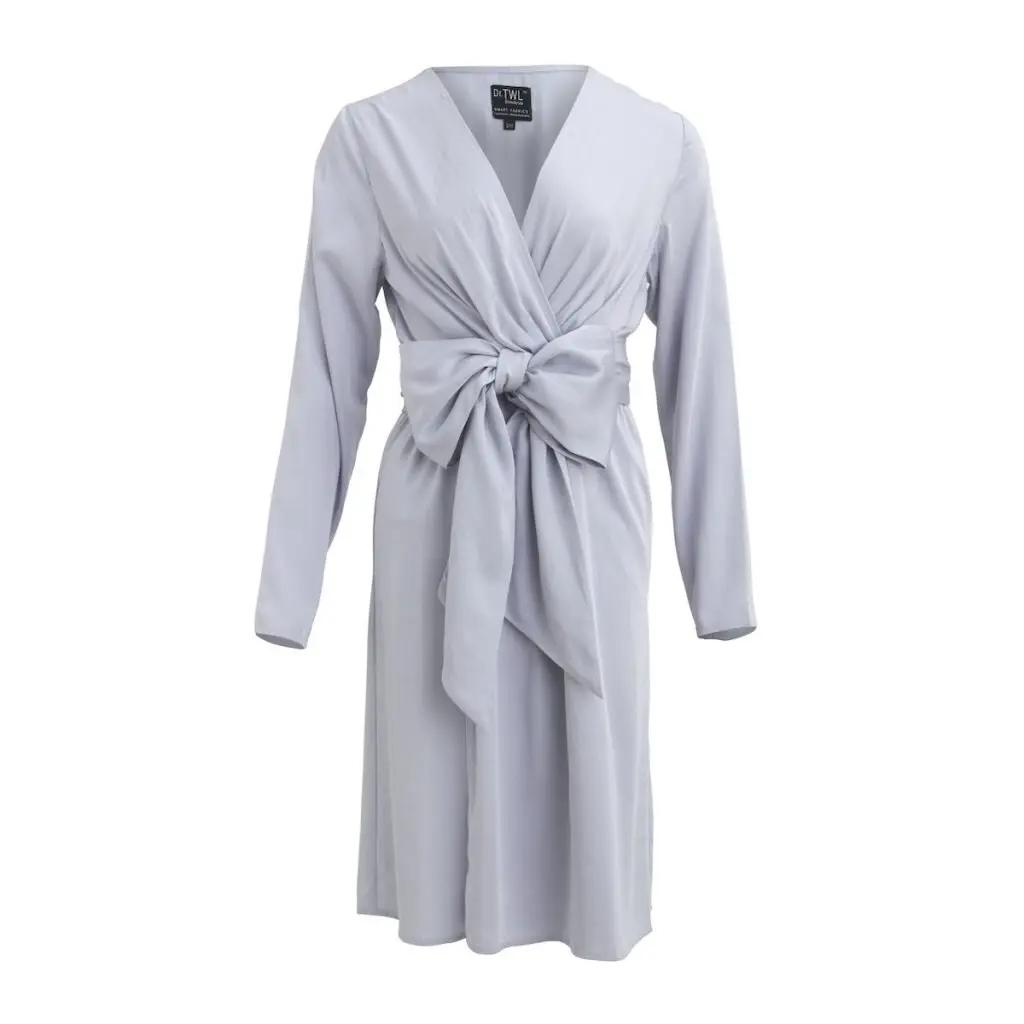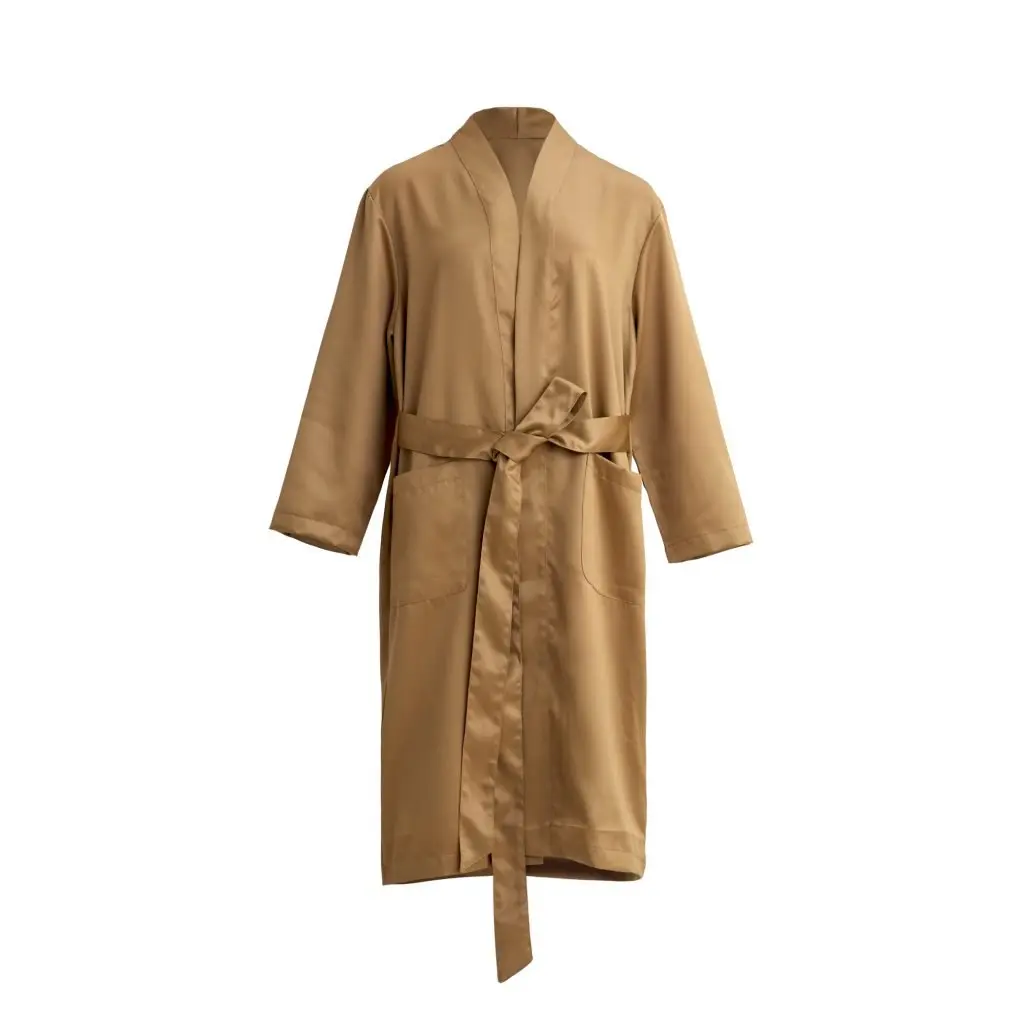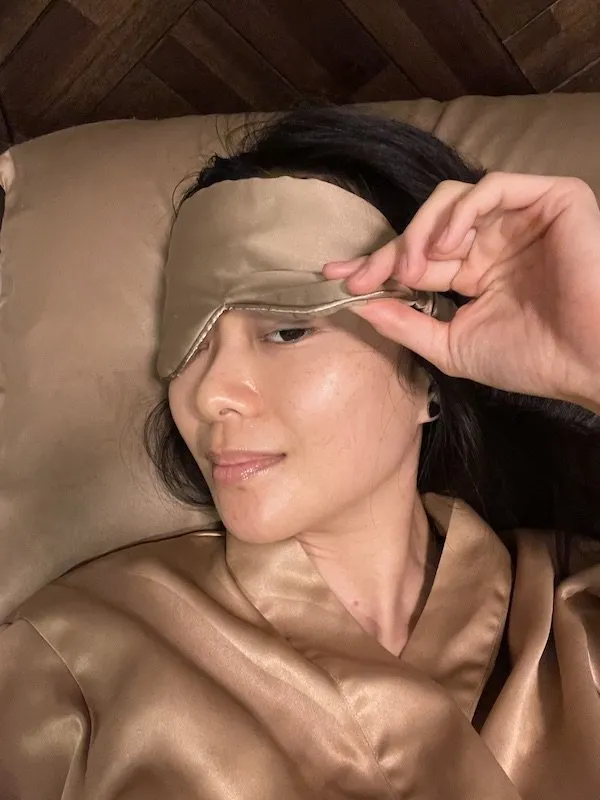Podcast: Play in new window | Download
Subscribe: Apple Podcasts | Spotify | RSS
Ep 45: Can The Clothes You Wear to Sleep Affect Your Skin?
Dr. Teo: Hi guys, this is Dr. Teo Wan Lin of TWL Specialist Skin & Laser Centre. Welcome to my podcast Dermatologist Talks: Science of Beauty. Today we’re going to discuss how the different materials that our skin comes into contact with affect the functioning of our skin, its effect on physiology and how we can make an informed choice with regards to the types of garments and fabrics for skin that we wear to sleep.
Chelsea: Yes, sleep is so important, considering we spend ⅓ of our lives asleep! Everything from the clothes we wear to sleep, the pillowcase we sleep on, the position we sleep in, all make a difference to our skin. This is not usually a topic I hear a lot about, so i’m excited to hear more about how different types of clothings that we wear to bed may affect our skin. In particular, wearing silk to sleep or just in general has always been considered a small luxury- silk, because of it’s smooth, friction-free texture, has always been touted as being one of the beneficial fabrics for skin.
Is having a sleep routine that important?
Dr. Teo: The idea of sleep routine is something that has been important in sleep management. Psychologists have been advising patients who have insomnia, for example, to have a routine before bedtime. Part of it is primarily, because it helps to reduce anxiety and stress levels, when we follow a certain routine. A ritual is also a meditative process. For example, the mindfulness movement centres around having certain rituals, which allows the individual to focus on the present.
Could you elaborate on why silk fabrics for skin are so popular as well as the benefits of wearing it at night?
Dr. Teo: The rise of using silk fabrics for skin in our sleep garments or pillowcases has been around for some time. There are lots of high profile silk garment manufacturer, and designers who specialise in silk sleepwear. Right now, I think the shift is more towards how silk itself has specific innate skincare benefits, more than our understanding of this textile as a status symbol or a luxury. We are going to talk about the science behind how these textiles interact with skin. Primarily in terms of creating a specific skin microenvironment.

The Bedtime Ritual Bundle helps you get a good night’s rest with the CUIONS™ Pillow Case designed to reduce face wrinkles and prevents acne with a bactericidal effect. It also includes the CUIONS™ Anti-Ageing Sleeping Eye Mask with advance copper ion technology that helps to prevent under eye wrinkles and the Lipisilk™ Cocoon Night Hair Wrap as a natural protein-rich cocoon to condition hair while sleeping, nourishing soft and smooth tresses.
In Singapore, because we live in a tropical climate, humidity and heat are factors that are amplified when you sleep. We are essentially in the same position for several hours. The fabric we wear can potentially create an occlusive micro-environment. Which, in the context of having a restful night’s sleep, is sometimes not very conducive.
Chelsea: I agree, in such hot and humid weather, most people need to sleep with the air conditioner on, or at least have a fan blowing at them.
What are the properties of silk that make it suitable for sleepwear?
Dr. Teo: That’s a good question, silk has specific thermal properties. If we break down the specifics, what we would say is that it has a high thermal emissivity rate. This means that it tends to cool your skin when it’s in contact with it. The other interesting factor about natural silk is that when material scientists do studies on the composition of silk, they find that copper ions – which we now know is an antioxidant that can stimulate collagen production – is actually produced in the spinning process of natural silk but in very low concentrations. However, it does account for the anecdotal experiences of individuals feeling. This relates to better skin when they are wearing silk pyjamas or are sleeping on a silk pillowcase.
In Singapore, it’s not just when you’re sleeping. But in the daytime as well when you’re wearing tight, occlusive clothing coupled with sweat. These predispose to certain dermatological conditions of the body. For example, fungal acne, which is a misnomer of pityrosporum. While it does resemble acne, pityrosporum folliculitis is due to the inflammation of the hair follicles by yeast overgrowth. This yeast, Malassezia, thrives in warm, humid environments. Wearing silk or breathable textiles, loose fitting clothing is usually our recommendation for individuals who suffer from this condition. This tends to be chronic and recurrent. Especially for people who are active and sweat a lot, and living in a tropical climate.
Can fabrics for skin help with acne?
It’s the same for individuals who suffer from true acne. Truncal acne is when the acne occurs on the body. When you’re sleeping, besides comfort levels, we also think about the type of microenvironment your skin is exposed to. So, silk is a very comfortable fabric as it is very soft and smooth. In terms of the way it behaves when in contact with skin, it definitely is conducive as opposed to a textile like wool or polyester.
For example, wool is very prickly and can irritate the skin of individuals with eczema. We can apply these concepts to hair. For example, when using a silk nightcap, it reduces the amount of hair static that occurs. With regards to protection, it protects the hair from split ends, a form of damage to the hair shaft. It also helps to maintain the hair structure because its natural silk contains certain proteins like sericin and fibroin. These are essentially moisturising for the hair shaft.
Chelsea: Ah yes, I do find myself gravitating towards certain fabrics for skin, especially taking into account Singapore’s weather! Well are there any problems that may arise from the use of natural silk? I do know that you have come up with a biofunctional textile that is made with the CUIONS synthetic silk.
How does the CUIONS™ synthetic silk act as an alternative to natural silk, and how it measures up to it?
Dr. Teo: The CUIONS™ synthetic silk is termed a silk. Primarily because of its inherent similarities to the biochemical properties of natural silk. It is able to maintain the skin microclimate in the following ways. Firstly, keeping the skin cool because of its high thermal emission rates. The second is the concentrated copper ions present in this silk, which exceeds that found in natural silk.
Ethical issues and environmental impact of silk
Finally, because we also want to increase awareness of the ethical issues involved in the use of natural silk products. Animal rights and welfare groups have pointed out that silkworms are actually boiled or gassed alive in the process of harvesting silk. It has been demonstrated in our study of worms in general, that they are able to feel pain. So, part of the initiative of the biomaterials arm under my company, Dr. TWL dermaceuticals is also to create awareness of cruelty-free alternatives to textiles, that recreates this optimal skin micro-environment.
Natural silk versus silk alternatives
We definitely want people to realise that there is a role for synthetic substitutes that are in fact superior to the original product. The one thing that is evident in the use of natural silk versus silk alternatives, is that natural silk is not the most durable fabric. In fact, you have to dry clean it. When you are hand washing it, a lot of care has to be taken in order for the garment to retain its luxurious aesthetic. This also prevent the fibres from disintegrating. This is something which is very obvious when you try to use natural silk in face masks.
Silk is not durable or water resistant
In the context of the COVID-19 pandemic, this is a bad idea. Mainly because it’s not durable nor water resistant. This is actually the primary function of wearing a protective face mask – protecting others from your biofluids. Therefore, the textile of your face mask has to be water-resistant to a certain extent. Importantly, the terminology synthetic silk or vegan silk, is partly to raise awareness of silk alternatives that recreate this beneficial skin micro-environment, especially so when it can be made superior to natural silk itself.
Besides a skin-cooling effect, there are additional textile cosmeceutical benefits such as the stimulation of collagen production. For example, the increase in concentration of the copper ions in the CUIONS™ fabric, which has been integrated into the pillow case as well as the fabric face mask.
Chelsea: Those are good points indeed, for every textile we should consider the purpose of how it’s being used. In the context of a face mask, it’s so important to have something that is water resistant. Additionally, something that is durable enough to be washed often after each use. And yes, while silk is a natural and luxurious fabric, many overlook the environmental impact and ethical concerns of silk. It uses more fresh water, causes more water pollution, and emits more greenhouse gases than other fabrics for skin.
Apart from the CUIONS fabric, are there any other silk alternatives that offer the same, or even more benefits of silk?
LyoSilk™ is another silk alternative that we created from regenerated plant cellulose fibres for our day wear range and has specific thermal cooling properties.
Both the CUIONS™ and LyoSilk™ textiles have the following properties which are beneficial for the skin micro-environment. First of all, a high thermal emissivity rate for infrared light so it feels cool to the touch. This is an important factor when you are making sleep garments. Secondly, the CUIONS™ textile has copper nanoparticles which are permanently incorporated into the weave of the fabric. This means that it is released when in contact with your skin. Paving the way for a new generation of skincare in the form of textiles with the benefits of wrinkle reduction, stimulation of collagen – which are evidence-based in both cell and clinical studies with regards to copper nanoparticle technology.

The LyoSilk™ Wrap Dress is made from 100% sustainable plant cellulose fibres, our proprietary textile technology which are laboratory tested to be antimicrobial, sweat-wicking and cooling.
Chelsea: That’s really good to know! In this day and age it is comforting to know that there are so many options and alternatives we can choose from. You’ve mentioned briefly the skincare benefits of a biofunctional textile.
How does a textile help in the treatment of skin conditions?
Dr. Teo: Moving on to the benefits of textiles, I think it’s an important concept for us to appreciate. The skin, being a highly accessible organ, absorbs whatever is applied on it – which is the basis for our skincare routine and why dermatologists prescribe topical medications. Increasingly, we are learning about the influence of the microbiome on skin diseases. Healthy skin has a balance of micro-organisms on your skin which is actually protective. Our efforts to treat the skin microbiome are very limited, primarily because administering oral or topical antibiotics does the opposite of what we want in terms of preservation of healthy skin microbiome. Because the concept of microbiome really is that there are good bacteria and also bad bacteria – so the key is to have a good balance.
The problem of bacterial resistance
When you apply an oral or topical antibiotic, you are killing both populations of the bacteria. However, the bigger problem is bacterial resistance. Bacterial resistance is probably the biggest problem in the treatment of bacteria related skin conditions like acne, or folliculitis. We find that short-term application of topical antibiotics work. But then after that, the skin cells very quickly learn to adapt, and become resistant to the antibiotic. That’s actually very dangerous on a global level, because of the patterns of drug resistance that we are seeing. Beyond the skincare benefits, biofunctional textiles as a type of textile cosmeceutical is relevant because it’s able to exert medically beneficial therapeutic effects.
Bactericidal properties
For example, it is bactericidal – killing off bacteria, including harmful bacteria, allowing the body to retain it’s ability to recolonize with beneficial bacteria without the problems of antibiotic resistance. This is why the focus of our research and and when relating to the maskne microbiome, is very relevant, but also for treatment of other conditions of the body. For example, we are conducting a trial of the CUIONS™ Kimono, as an adjunct treatment for moderate to severe body acne, as well as pityrosporum folliculitis, colloquially known as fungal acne. It also has a track record for its implementation in eczema patients when used for bedtime.

The unisex Anti-Aging Kimono in CUIONS™ Gold features a nanoparticle integrated biofunctional textile. It is woven into a luxurious garment with minimal seams for ultimate skin comfort and breathability.
Chelsea: Yes, I’m glad you talk about eczema, because that’s definitely one skin condition in which we can see that the clothes we wear really do make a difference to our skin. Tell us more about that! What fabrics for skin have been traditionally recommended for eczema patients, and how can this biofunctional textile help with that?
What is the ideal sleepwear for eczema patients?
Eczema is one condition that biofunctional textiles have been very relevant to in the last decade. Silver impregnated textiles, zinc oxide impregnated textiles, these have a broad spectrum bactericidal effect. This helps in the treatment of eczema which contributes to by the Staph. aureus superantigen effect which drives inflammation in these patients. In particular, in eczema patients, it is often their sleep that is disturbed. Therefore, it’s highly relevant that we are incorporating a garment that is, in the form of sleepwear.
To illustrate, almost all the studies that have been conducted on eczema patients in the context of biofunctional textiles are for sleepwear. Whenever we engineer a biofunctional textile, a polymerization process is essential to treat the fabric. So that instead of having the usual qualities of a synthetic material – which has low breathability and an occlusive nature, is altered. Instead, conferring properties that allow the textile to recreate the ideal skin microenvironment.
Fabrics for skin in the context of daily wear
In the context of daily wear, which has a high evaporation coefficient, we want it to dry quickly rather than saturate, such as when using cotton or other types of natural fibers. Also, the high thermal emissivity rate means that it cools your skin on contact. Finally, the key thing is that the metallic nanoparticle impregnation process is a way of ensuring that these textile nanoparticles do not wash out with your laundry, but instead permanently incorporate them and constantly will have a certain level of efficacy when it’s applied on skin.
Chelsea:
hat’s definitely important! I definitely didn’t know how much work it takes to designing, engineering and manufacturing a textile, which I’m sure is complicated work when it comes with so many additional benefits! Today we covered how what we wear to sleep can affect our skin, the benefits, and disadvantages of silk for the skin, and how we can harness these benefits in fabrics for skin like the CUIONS biofunctional textiles, and engineer them to have more skincare benefits to treat skin conditions.
Well that’s it for today’s episode. You can follow Dr. Teo on Instagram @drteowanlin for podcast updates, and remember to check out our website at www.scienceofbeauty.net for the full transcript.

